
Comparing Population Proportions 1
- Subject:
- Mathematics
- Probability
- Statistics
- Material Type:
- Lesson
- Provider:
- Khan Academy
- Author:
- Khan Academy
- Date Added:
- 11/16/2016

Comparing Population Proportions 1

Comparing Population Proportions 2
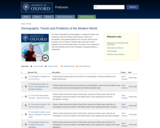
The study of populations and demographics is explained in detail in this introductory series by Professor David Coleman, Professor of Demography. Using statistics gathered from censuses, parish records and other sources, Professor Coleman looks at the ways in which populations rise and fall through history. This series is at an introductory level and individuals need no prior knowledge of analyzing statistics or mathematics.
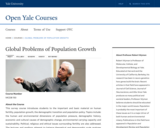
This survey course introduces students to the important and basic material on human fertility, population growth, the demographic transition and population policy. Topics include: the human and environmental dimensions of population pressure, demographic history, economic and cultural causes of demographic change, environmental carrying capacity and sustainability. Political, religious and ethical issues surrounding fertility are also addressed. The lectures and readings attempt to balance theoretical and demographic scale analyzes with studies of individual humans and communities. The perspective is global with both developed and developing countries included.

The video resource "Human Population Growth - Crash Course Ecology #3" is included in the "Ecology" course from the resources series of "Crash Course". Crash Course is a educational video series from John and Hank Green.

Hypothesis Test Comparing Population Proportions

The video resource "Population Ecology: The Texas Mosquito Mystery - Crash Course Ecology #2" is included in the "Ecology" course from the resources series of "Crash Course". Crash Course is a educational video series from John and Hank Green.
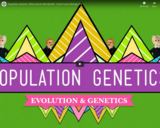
The video resource "Population Genetics: When Darwin Met Mendel - Crash Course Biology #18" is included in the "Biology" course from the resources series of "Crash Course". Crash Course is a educational video series from John and Hank Green.

Using Avida-ED freeware, students control a few factors in an environment populated with digital organisms, and then compare how changing these factors affects population growth. They experiment by altering the environment size (similar to what is called carrying capacity, the maximum population size that an environment can normally sustain), the initial organism gestation rate, and the availability of resources. How systems function often depends on many different factors. By altering these factors one at a time, and observing the results, students are able to clearly see the effect of each one.
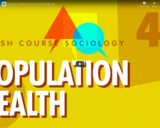
The video resource "Population Health: Crash Course Sociology #43" is included in the "Sociology" course from the resources series of "Crash Course". Crash Course is a educational video series from John and Hank Green.
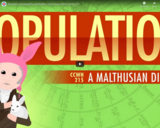
The video resource "Population, Sustainability, and Malthus: Crash Course World History 215" is included in the "World History 2" course from the resources series of "Crash Course". Crash Course is a educational video series from John and Hank Green.

Psychology is designed to meet scope and sequence requirements for the single-semester introduction to psychology course. The book offers a comprehensive treatment of core concepts, grounded in both classic studies and current and emerging research. The text also includes coverage of the DSM-5 in examinations of psychological disorders. Psychology incorporates discussions that reflect the diversity within the discipline, as well as the diversity of cultures and communities across the globe.Senior Contributing AuthorsRose M. Spielman, Formerly of Quinnipiac UniversityContributing AuthorsKathryn Dumper, Bainbridge State CollegeWilliam Jenkins, Mercer UniversityArlene Lacombe, Saint Joseph's UniversityMarilyn Lovett, Livingstone CollegeMarion Perlmutter, University of Michigan


Thomas Malthus's views on population. Malthusian limits.
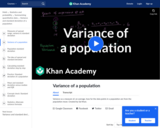
Variance as a measure of, on average, how far the data points in a population are from the population mean

Students experience civil and environmental engineering by planning a housing development in an existing biome, while also protecting the native species that live there. They conduct research, draw plans, make brochures and give presentations, with each team having a member serving as a project manager, civil engineer, environmental engineer and graphic designer. The best designs creatively balance the needs and resources necessary to support both the native species and human infrastructure.